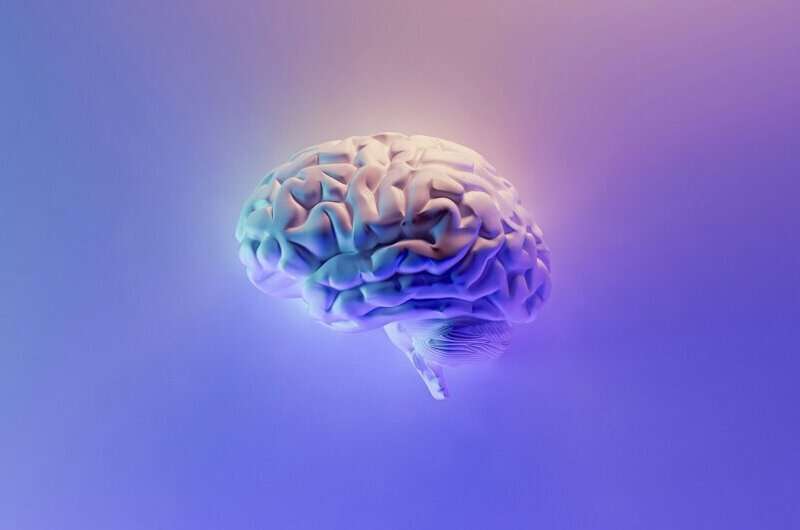Key brain areas are larger in teenagers with abdominal obesity, research finds


Several areas of the brain, including regions that play a critical role in learning and memory and in the control of emotions, are larger in adolescents who are living with obesity, new research being presented at the European Congress on Obesity (ECO 2025) has found.
The finding, from a study of thousands of teenagers in the US, raises concerns that obesity affects not only physical health but also learning, memory and control of emotions, says lead researcher Dr. Augusto César F. De Moraes, of UTHealth Houston School of Public Health in Austin, Department of Epidemiology, Texas, U.S. “This is particularly alarming, given that the teenage years are such an important time for brain development,” he adds.
The percentage of children and adolescents worldwide who are living with obesity more than quadrupled among girls (from 1.7% to 6.9%) and among boys (from 2.1% to 9.3%) between 1990 and 2022.
In the US, it is estimated that more than one in three children aged 5 to 14 (36.2% of boys and 37.2% of girls) are living with overweight or obesity—equating to more than 15 million children.
Obesity—particularly abdominal obesity—has been linked to changes in brain development in the past, with regions key to cognition and the regulation of emotions seemingly particularly vulnerable.
Health inequalities like poor access to quality education, safe neighborhoods and healthy food are well-known contributors to physical health problems—but their role in brain development and cognition is often overlooked.
To find out more about how obesity and health inequalities affect brain structure and cognition, Dr. De Moraes and colleagues in the US, Brazil, and Spain analyzed data from 3,320 participants in the ABCD study, an ongoing study into how childhood experiences affect brain development and health.
The participants were recruited from cities in 17 states and followed for four years, from 2016–2018 to 2020–2022. (For list of cities, see notes to editors.) The average age of participants at baseline was 9.9 years and 47.4% were girls.
They were categorized based on obesity status, with further stratification by abdominal obesity (measured using waist circumference). At baseline, approximately 34.6% of participants were classified as having abdominal obesity.
Structural MRI scans assessed the volume of several brain regions of the brain’s subcortex, including the amygdala, hippocampus, caudate, accumbens, pallidum, putamen and thalamus.
Health disparities were assessed using the Child Opportunity Index, which measures a child’s opportunities via the quality of neighborhood features such as education, walkability and access to healthy food and green space.
Several of the brain regions were larger in adolescents with abdominal obesity than in their peers without abdominal obesity. The biggest changes were seen in the hippocampus, which is involved in memory and learning, and the amygdala, which regulates, or controls, emotions, including fear, happiness, anger and anxiety.
The hippocampus was approximately 6.6% larger and the amygdala was about 4.3% larger in teens with abdominal obesity compared to those without.
The amygdala was particularly large in teenagers with very high levels of abdominal fat (a waist-to-height ratio over 0.5). This raises concerns that excess body fat affects how the brain handles emotions, say the researchers.
The thalamus (which relays information about movement, hearing, taste, sight and touch) and caudate (which helps control movement) showed smaller increases in size.
The study also found that teens from lower-opportunity areas showed reduced development in key brain regions, such as the hippocampus, putamen and amygdala, compared with their peers in higher-opportunity areas.
“This difference was even more pronounced among adolescents with persistent abdominal obesity,” says Dr. De Moraes. “It highlights the urgent need to address both social inequality and health risks to support not only physical well-being but also healthy brain development in youth.”
The authors explain that in the context of the young developing brain, both decreased and increased growth can cause harm. Thus, having lower-than-normal brain development, as shown in the teens in lower-opportunity areas, or larger-than-normal parts of the brain due to inflammation caused by obesity, can both be harmful.
Dr. De Moraes concludes, “Our findings suggest that obesity, particularly abdominal obesity, can impair teenagers’ learning, memory and control of emotions. I worry about how these changes, which are occurring at the age of 13 or 14, might affect them later in life.
“There’s even a chance they could be a higher risk of things like memory problems or dementia as they get older.
“That’s why we believe supporting healthier habits early on is so important, not just for physical health, but for brain health too.
“Treating and preventing adolescent obesity won’t only improve health—it may improve brain health, too.”
More information:
Abstract:0057. Augusto César F. De Moraes, et al. Impact of Abdominal Obesity on Subcortical Brain Structures in Adolescents: The Role of Social Determinants of Health. drive.google.com/file/d/1Ifsp4 … 4_mfOVdTaRlTMEG/view
Provided by
European Association for the Study of Obesity
Citation:
Key brain areas are larger in teenagers with abdominal obesity, research finds (2025, May 10)
retrieved 11 May 2025
from https://medicalxpress.com/news/2025-05-key-brain-areas-larger-teenagers.html
This document is subject to copyright. Apart from any fair dealing for the purpose of private study or research, no
part may be reproduced without the written permission. The content is provided for information purposes only.
If you liked the article, do not forget to share it with your friends. Follow us on Google News too, click on the star and choose us from your favorites.
If you want to read more Like this articles, you can visit our Science category.




